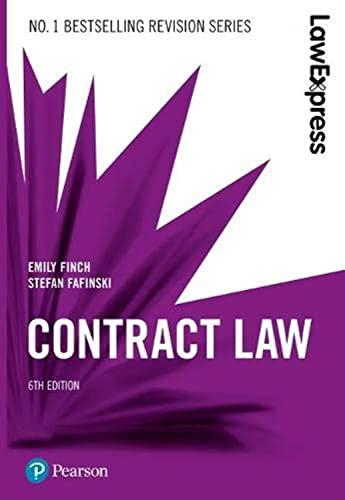Question
Summarize what the paragraphs speak about in an explanation? Tenants: Rights and Duties The lease itself and the laws of the state where the property
Summarize what the paragraphs speak about in an explanation?
Tenants: Rights and Duties
The lease itself and the laws of the state where the property is located govern the rights and duties of the parties. Several tenant rights are sometimes misunderstood. Unless otherwise specified in the lease, the tenant has sole ownership and control of the premises. The landlord has no right to enter the premises except to collect rent, hence the owner of an apartment building cannot inspect the leased apartments unless the lease expressly permits it. The landlord may retake ownership and inspect the property at the end of the lease. If a tenant abandons the premises, the landlord may retake control to protect the property. Unless required by the contract, tenants are not required to make costly repairs. A tenant is not required to replace a worn-out heating or cooling system but must replace a broken window. Due to the difficulties of identifying repairs, the lease should specify both parties' obligations. If the lease requires repairs, such as fixing a bad floor or a broken furnace, the tenant must comply. In most cases, the duty to repair does not include replacing the entire structure. In many commercial leases, the tenant has the right to remove trade fixtures placed during the lease time. Remember the difference between trade and fixture fixtures: The former become part of the land and belong to the landowner. The latter are the tenant's personal property. The right to remove ends with the lease, and any trade fixtures left remain the landlord's property. (Morgan, 2019)
Alternative to the Mortgage: Deed of Trust
Using a document known as a trust deed instead of a mortgage to secure debts is an option that is becoming more common. Title to the real property is transferred to a trustee, who holds it on behalf of the creditor, in this instrument. In contrast to a mortgage, a deed of trust involves three partiesthe trustor (debtor), the trustee, and the beneficiaryas opposed to two parties in a mortgage (creditor). If the loan is being returned, the trustee's title does not impair the debtor's use of the land. As soon as all debts have been paid, the trustee returns the property to the debtor and removes the lien from it, according to contract. There are times when it is necessary to liquidate assets to pay off a debt. All rights, titles, and interests that the debtor possessed at the time the deed trust was signed are transferred to a new purchaser under this power of sale. When a loan is expected to be renegotiated or many loans are secured by the same property, deeds of trust are preferred over mortgages. The nature of the deed of trust is that the note secured by it can be transferred independently of the deed. Notes are given to trustees of trust deeds after they are paid in full; this ensures the obligation has been fulfilled. (Morgan, 2019)
References
Morgan, J.F. (2019). Business law. BVT Publishing.
Step by Step Solution
There are 3 Steps involved in it
Step: 1

Get Instant Access to Expert-Tailored Solutions
See step-by-step solutions with expert insights and AI powered tools for academic success
Step: 2

Step: 3

Ace Your Homework with AI
Get the answers you need in no time with our AI-driven, step-by-step assistance
Get Started


